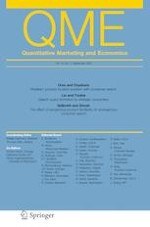
Donkers, B., Verhoef, P. and \de Jong\, M. (2007). Modeling CLV: A test of competing models in the insurance industry Quantitative Marketing and Economics, 5(2):163--190.
-
Affiliated authors
-
Publication year2007
-
JournalQuantitative Marketing and Economics
Customer Lifetime Value (CLV) is one of the key metrics in marketing and is considered an important segmentation base. This paper studies the capabilities of a range of models to predict CLV in the insurance industry. The simplest models can be constructed at the customer relationship level, i.e. aggregated across all services. The more complex models focus on the individual services, paying explicit attention to cross buying, but also retention. The models build on a plethora of approaches used in the existing literature and include a status quo model, a Tobit II model, univariate and multivariate choice models, and duration models. For all models, CLV for each customer is computed for a four-year time horizon. We find that the simple models perform well. The more complex models are expected to better capture the richness of relationship development. Surprisingly, this does not lead to substantially better CLV predictions.